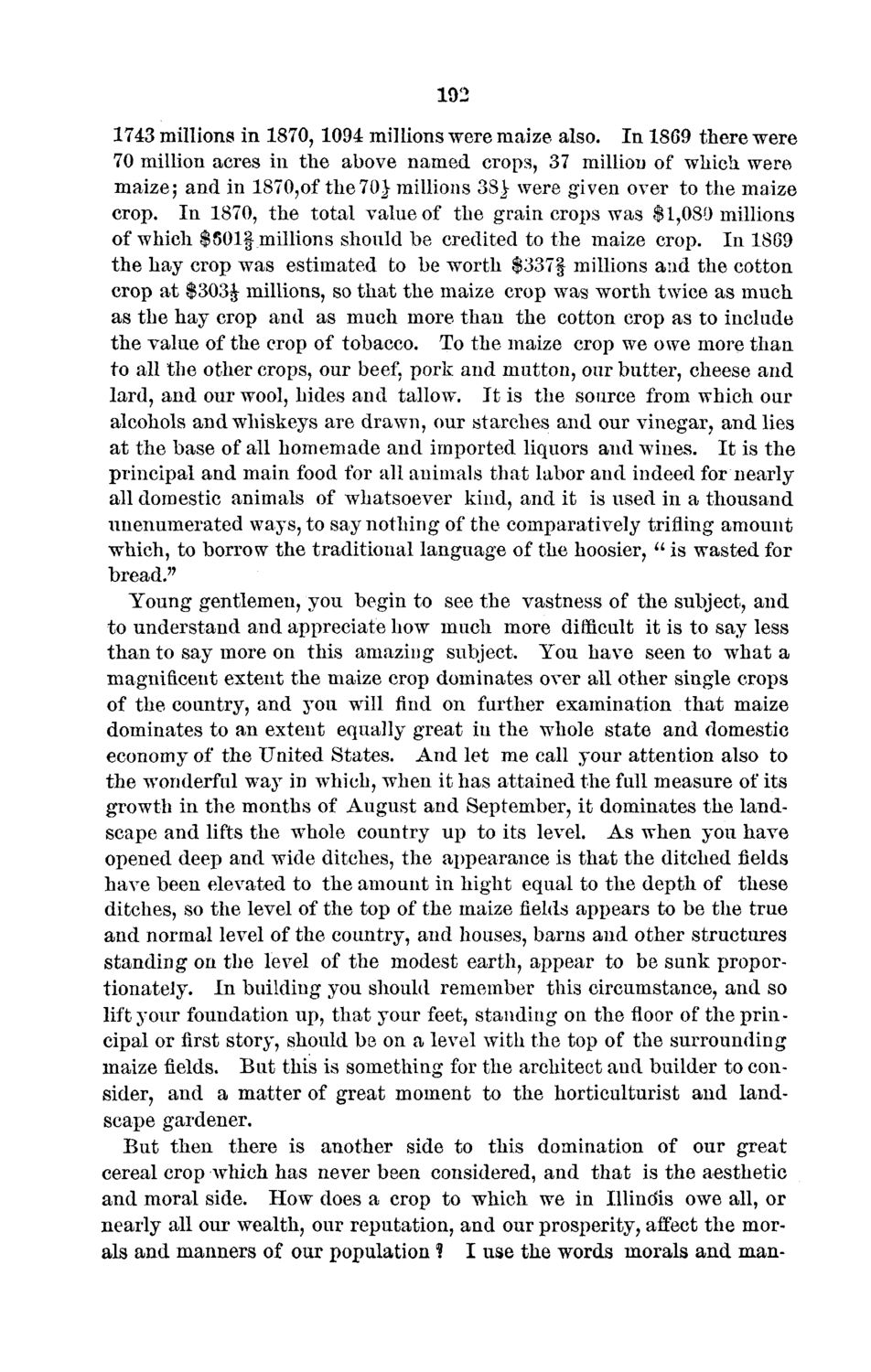| |
| |
Caption: Board of Trustees Minutes - 1872
This is a reduced-resolution page image for fast online browsing.

EXTRACTED TEXT FROM PAGE:
102 1743 millions in 1870, 1094 millions were maize also. In 1869 there were 70 million acres in the above named crops, 37 million of which were maize; and in 1870,of the70J millions 38} were given over to the maize crop. In 1870, the total value of the grain crops was $1,080 millions of which $501§ millions should be credited to the maize crop. In 1869 the hay crop was estimated to be worth $337§ millions and the cotton crop at $303J millions, so that the maize crop was worth twice as much as the hay crop and as much more than the cotton crop as to include the value of the crop of tobacco. To the maize crop we owe more than to all the other crops, our beef, pork and mutton, our butter, cheese and lard, and our wool, hides and tallow. It is the source from which our alcohols and whiskeys are drawn, our starches and our vinegar, and lies at the base of all homemade and imported liquors and wines. It is the principal and main food for all animals that labor and indeed for nearly all domestic animals of whatsoever kind, and it is used in a thousand unenumerated ways, to say nothing of the comparatively trifling amount which, to borrow the traditional language of the hoosier, " is wasted for bread." Young gentlemen, you begin to see the vastness of the subject, and to understand and appreciate how much more difficult it is to say less than to say more on this amazing subject. You have seen to what a magnificent extent the maize crop dominates over all other single crops of the country, and you will find on further examination that maize dominates to an extent equally great in the whole state and domestic economy of the United States. And let me call your attention also to the wonderful way in which, when it has attained the full measure of its growth in the months of August and September, it dominates the landscape and lifts the whole country up to its level. As when you have opened deep and wide ditches, the appearance is that the ditched fields have been elevated to the amount in hight equal to the depth of these ditches, so the level of the top of the maize fields appears to be the true and normal level of the country, and houses, barns and other structures standing on the level of the modest earth, appear to be sunk proportionately. In building you should remember this circumstance, and so lift your foundation up, that your feet, standing on the floor of the principal or first story, should be on a level with the top of the surrounding maize fields. But this is something for the architect and builder to consider, and a matter of great moment to the horticulturist and landscape gardener. But then there is another side to this domination of our great cereal crop which has never been considered, and that is the aesthetic and moral side. How does a crop to which we in Illinois owe all, or nearly all our wealth, our reputation, and our prosperity, affect the morals and manners of our population f I use the words morals and man-
| |